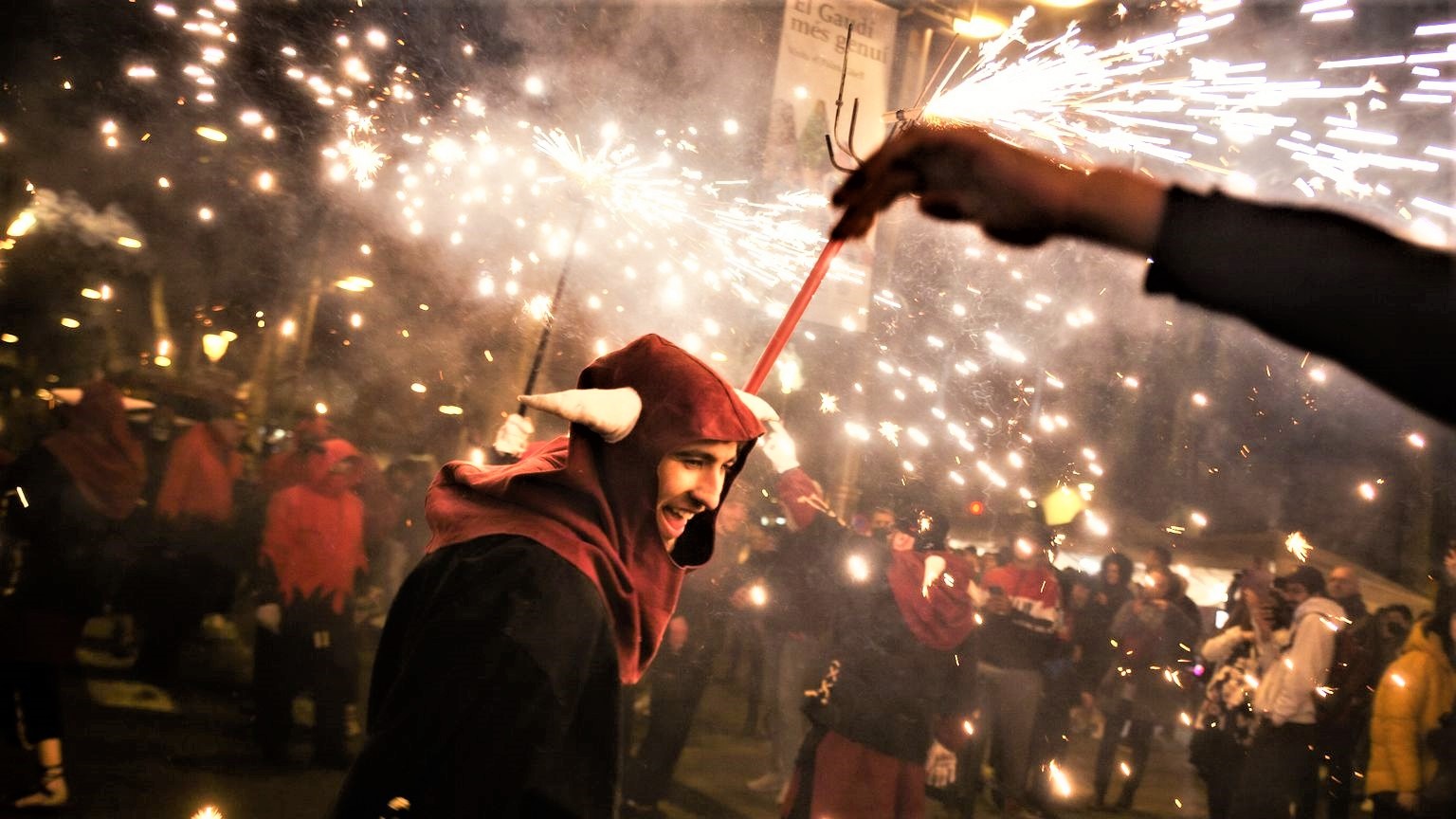Although the bonfires and firecrackers of Catalan festivals seem to be recent customs, they have actually been carried on since the dawn of time. And not only during the night of Sant Joan.
Photo: Goroka
If there is one element that cannot be missing during Catalan festivals, it is fire. In the form of firecrackers, fireworks or even big bonfires, this natural element punctuates the calendar and the festivals of the year, in Catalonia. So much so that today, one could almost say that the Catalans cultivate a strange fascination with fire.
” It’s part of human evolution, men have always used fire in their traditions”, generalizes Pep Enric Martín, who knows Catalan folklore well. Since the dawn of time, most civilizations have made fire an essential element of life, but also of symbolic importance. “The fire represents purification, it wards off evil spirits. And even if some cultures have lost this connection with fire, Catalan culture has kept it until today.”, says Pep Enric Martín. If he knows the local traditions so well, it is because he himself is president of the Federation of Devils and Demons of Cataloniaanother folk interpretation of fire.
Folk dances of flaming devils
During popular festivals, as in certain districts of Barcelona for example, one can see people dressed as devils running and dancing while carrying spears armed with pyrotechnic devices, spitting sparks. These “correfocs” (‘short-fire’) are in fact a modern adaptation of the symbolism of fire, in Catalan culture. “When the powder Chinese arrived in Europe, during the XIVth century, certain traditions which used the fire evolved with the powder”, justifies Pep Enric Martín.
Photo: Manu González/Ajuntament
These fiery devil dances, which go back at least to Middle Agesrepresented a struggle between good and evil, between angels and demons, and clearly have Catholic significance. But they continue to use an ancestral element, well before Christianization: fire.
Over the centuries, firecrackers replaced fire in some Catalan customs, although they are recent. “They appear during the second half of the 19th century.”, specifies Albert Rovira, director of the entertainment department of Pirotecnia Igual. It was in fact in 1880 that the company was born, one of the oldest in Catalonia to distribute pyrotechnic equipment. Although today it is more specialized in the organization of fireworks, Albert Rovira admits: “the use of firecrackers and pyrotechnics today is a way for people to celebrate something. It’s really part of popular culture.”
Sant Joan bonfires
But in addition to correfocs and firecrackers, Catalonia also retains traditions using fire without gunpowder, such as the great bonfires of Sant Joan. Even today, on the evening of June 23, the Catalans light fires (often thanks to the flame brought back from the Pic du Canigou) to celebrate Sant Joan, Saint John.
 Photo: Goroka
Photo: Goroka
This custom, even if it bears a Catholic name, is inherited from the pagan festivals of the summer solstice held by the Romans. For many peoples of the Mediterranean (and not only the Catalans), lighting a fire during the shortest night of the year had a function purifying, it chased away evil spirits and promised bountiful harvests for the summer. Even today, a Catalan saying even says that “who lights a fire for Saint John will not burn himself for a year” (‘qui encén foc per Sant Joan no es crema en tot l’any’).
A tradition stronger than ever, today
If Catalonia still maintains its fiery traditions and not other peoples (because in France the fires of Saint John have also existed in the past), it may be because the milder climate allows celebrations at the outside, unlike other northern countries… but not only.
 Photo: Vicente Zambrano González/Ajuntament
Photo: Vicente Zambrano González/Ajuntament
Pep Enric Martín believes that there is a very deep attachment between Catalans and their culture, which has led them to always keep it alive throughout history. “Today, we have one of the largest associative fabrics in Europe. People associate to maintain traditions, and do not depend on institutions.” These customs have therefore survived, even going through the Franco dictatorship which harshly repressed cultural manifestations that were not related to religion. “The culture of fire is extremely active at the moment in Catalonia, and even throughout the territory of the Catalan countries. We even find similar traditions in Italy, Greece, cultures that descend from Roman civilization.”
But the fire and firecrackers are no longer limited to the night of Sant Joan. They are found today in almost all Catalan festivals, whether religious or not, which has even pushed the economy to develop towards pyrotechnics. Pirotecnia Igual notably distributed pyrotechnic material for the 1992 Olympic Games and other major international events. Moreover, Spain was in 2017 the 7th country exporting the most pyrotechnic material in the world, thanks in particular to the Community of Valencia, a region that shares Catalan culture, and represented almost 50% of the country’s exports.
Read also: Where does the tradition of Sant Joan come from in Catalonia?
We would love to say thanks to the writer of this write-up for this incredible material
The Catalans’ strange passion for firecrackers
Find here our social media accounts as well as other pages related to it.https://nimblespirit.com/related-pages/

